Welcome to my blog where I will be detailing the restoration of an 1820's three story Georgian house in Dundalk, Louth, Ireland.
The restoration will entail the complete refurbishment of all aspects of the property, including the original sash windows, the staircase and associated mouldings, skirtings, interior doors and architraves, interior and exterior plasterwork. An entire heating/plumbing/electrical install is also required, as the house currently has no central heating and an antiquated electrical system. Insulation is required, as well as structural repairs to outside walls, internal floors and ceilings and some minor building work to the return, located at the rear of the property. Installation of a new kitchen, bathrooms and shower rooms is also required and all of this work is intended to be carried out over the coming year, 2013.
Specialist trades, materials and craftsmen will be utilised over the project, and this blog will be of interest to anyone who has an interest in property development, period architecture, specialist trades or projects that run massively over budget. :)
Below you will find a brief(ish) first post on the current state of the property, which marks the first in a long line of updates that hopefully many will find interesting.
Enjoy!
Stephen
The house:
The house is located at 3 St. Mary's Road, one of the oldest streets in Dundalk (c. 1700s). The property was constructed c. 1820 and under the Planning and Development Act 2000, the property is listed on Louth's Record of Protected Structures, reference D330.
It has been highlighted to be of conspicuous historical, archaeological, artistic, scientific, social or technical interest, including all fixtures and fittings. Because of this, all work to be performed in restoring this property must be overseen by qualified conservation architects, in conjunction with the Louth Conservation Officer.
History of St. Mary's Road
The below map shows Dundalk in the year 1766. St. Mary's road was essentially unpopulated at the time.
Below is a later map of Dundalk in 1837, which shows the three-property terrace and an expanding Chapel street.
The house is a three storey over ground level building, part of a terrace development that extends for the greater part of the south side of St Mary’s Road. The front of the building fronts directly without any garden or area onto St Mary’s Road and faces St Mary’s church. The side boundaries are formed by number 2 and 4 St Mary’s Road while the rear boundary is to Yorke St.
The building plot is aligned north-south with the front facing north. There is a return of two stories behind the staircase and the site includes a stable/mews building to the end of the garden which has frontage onto Yorke St. No 3 is little altered since its original construction. The rear return was added about one hundred years ago and possibly replaced an earlier stone built return as can be seen on no. 4 St Mary’s Road.
Front door details:
The building is a mid-terrace house on three stories with a two storey return to rear, to the right the buildings are two stories in height resulting in a gable showing to the west end of the building. The walls to the main house are of limestone rubble, the return to rear is built of brick. Stock brick has been used for forming openings within and the chimney is brick built. The building is a typical layout with two reception rooms on ground floor and staircase to the rear.
The chimneys are 450mm wide suggesting that the flues are unlined.
Front Façade
The front exterior which was probably rendered in lime plaster when built is now coated in
a pebble dash finish applied in the last 40 years, the rear of the building is coated in sand
cement render that has deteriorated in parts.
The building is two –bays wide on the front. The windows are 1/1 vertically sliding sash
casements; the ground floor window and door are not aligned with the bays above.
The door is a new hardwood replacement door having six panels, it is flanked within the door
recess by circular timber pilasters, and there is a single panel fanlight over the frieze.
Front ground floor sash window:
Front first floor sash window:
Front second floor sash window:
Roof
The roof is slate clad, natural slates on the front face and fibre-cement on the rear face, the
chimney is red brick
The eaves are slightly projecting smooth render (probably on a brick projection) with a half-
round gutter
Rear Façade, Return and Rear of Property
The rear garden contains the return and a stable block (described below).
The rear façade is clad in sand-cement render (there are structural issues related to the
damaged render about window heads described later). The windows are 1/1 timber vertically
sliding sash windows as on the front façade.
The return is constructed of 215mm red brick. The windows to the return are also timber 1/1
vertically sliding sash casements. On ground floor there is a further extension to the return,
added some time during the 20th century, that is quite poorly built and the roof of which is
badly constructed, has low ceiling height and is poorly insulated.
Return extension roof:
Rear plasterwork:
Stable (Mews) Block
The stable block at the rear of the property is a simple rectangular structure that formerly
had an internal mezzanine floor (probably a hayloft) it has been used in more recent times
as a car service area. The roof is profiled sheet metal, the walls are bare limestone with
some red brick lining to the rear opening; a large timber sliding door in the rear façade
opens to Yorke St while a single leaf timber door opens to the garden through the rear
façade.
Stable/mews:
Interior of stable:
Pit in stable:
More stable interior:
House Interior
Plan Form and Layout
The interior plan form is the typical form with reception rooms on hall floor, front and rear,
entrance hall with stair hall to rear. This form is repeated at first and second floor level.
First floor reception room:
Ground floor hallway:
Ground floor front reception room:
Stairs:
Stairs leading from second floor to first floor:
Stairs as viewed from first floor reception room:
Hot press containing a cylinder linked to a back-boiler system, serviced by the ground floor rear room fireplace:
Entrance to the only bathroom, located in the first floor of the return:
View from the bathroom, across the stairs into the first floor reception room:
Interior Joinery
The shutters, casings and architraves to windows at ground, first and second floors are of
early 19th century pattern and have survived partially intact albeit in damaged condition. That
damage largely consists of damaged sections and replacement of some sashes with modern
forms. Some historic repairs on these items are visible.
The skirtings are almost all new moulded sections. Original skirtings have survived only in
the 1st floor front room as a 185mm section with ogee moulded top.
Doors and architraves have generally survived intact and in reasonable condition.
The open string stairwell joinery does survive albeit with serious decay to lowest 3 steps.
Handrail, capping, balusters and treads are consistent with early 19th century work.
Carriages are weak however, especially the lowest section, and the stairs is prone to
vibration and ‘springing’ suggesting some structural weakness which will need to be
remedied.
The intermediate floors are excessively springy suggesting a combination of under designed
timber joists and possible decay at the floor wall junctions that should be addressed.
Interior Plasterwork
No decorative plasterwork survives although it is possible to see the scar of a former cornice
on the wall plaster in the 1st floor front room. The ceiling to the top floor is of lath and plaster
while the other ceilings to ground and first floor are of modern plasterboard construction
The original internal wall plaster which is unadorned and undecorated does survive albeit
with many areas of serious damage, in particular the flank wall of the stairs has been
affected by structural movement causing a serious vertical crack in that area
Extensive refurbishing of the top floor front and rear rooms with gypsum plaster:
Top floor bedroom floorboards in excellent condition:
The interior plaster to the return has been affected by the ingress of water through the
wall and the absence of any insulation also resulting in condensation both within and on
the surface of the walls in the return. The wall of the main house have suffered to a lesser
extent from the same problem especially on the rear facade which is more exposed to the
prevailing winds and has been clad in sand-cement render reducing the breathability of the
fabric.
The view into the ground floor of the return from the hallway.
Ground floor of return, formerly kitchen:





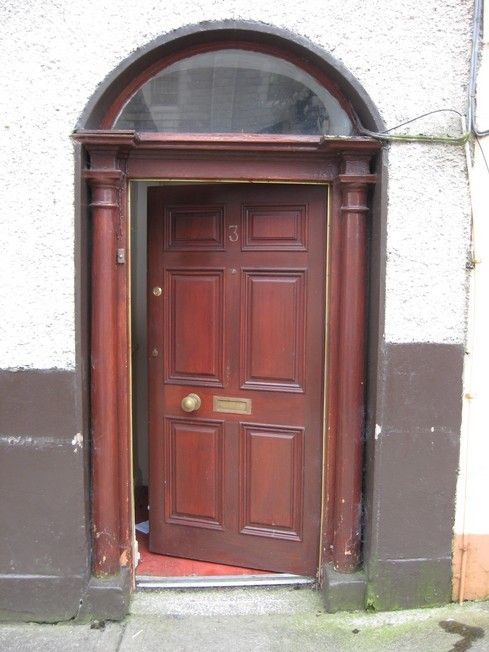
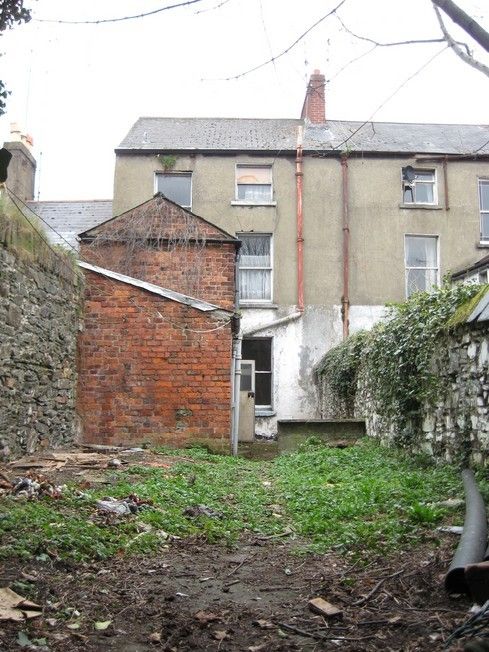
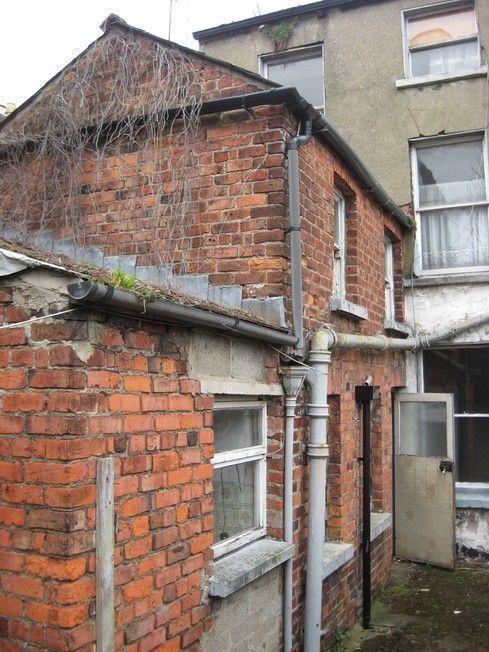
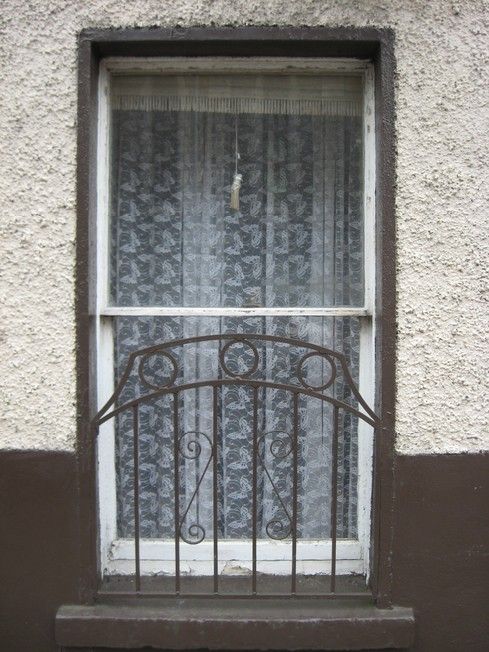



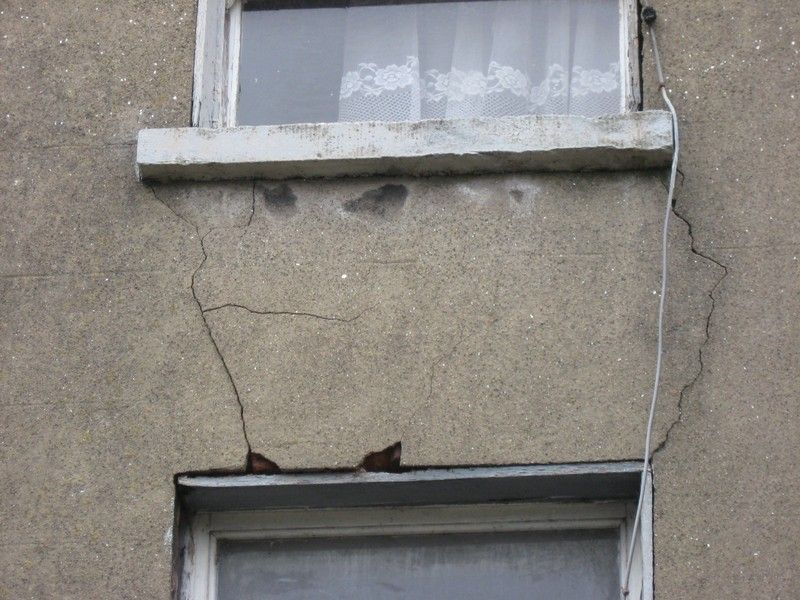

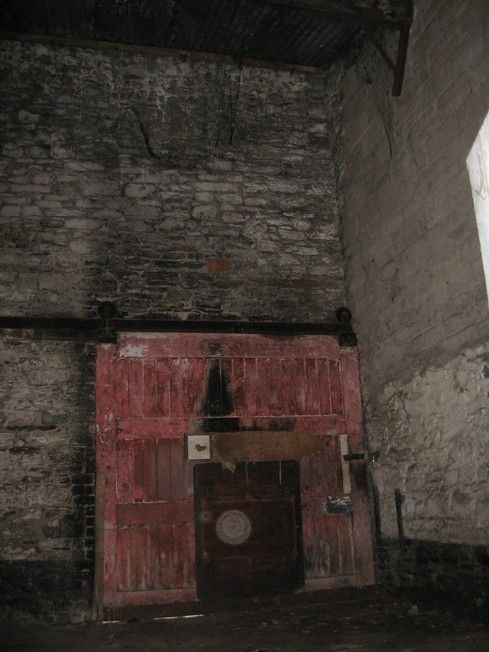
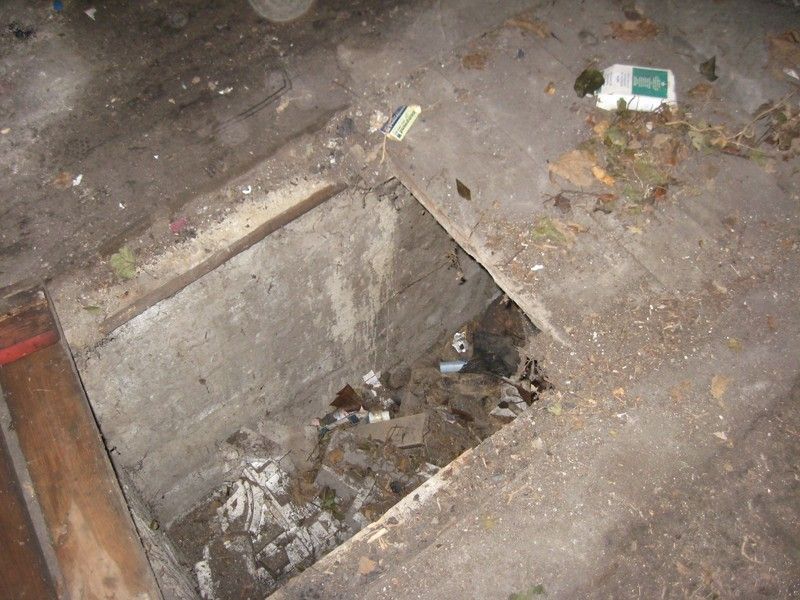
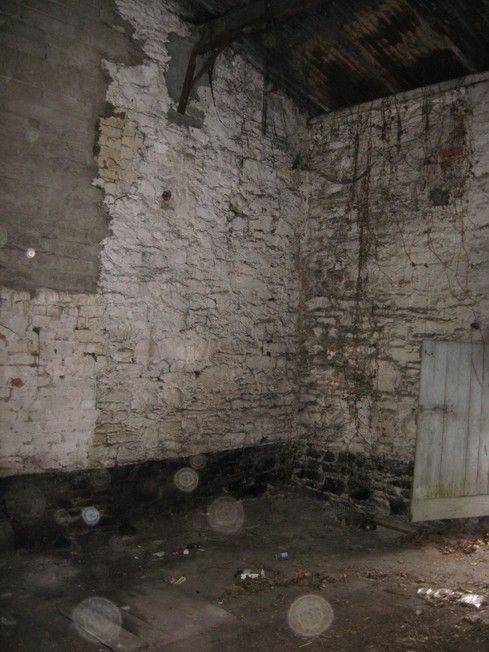

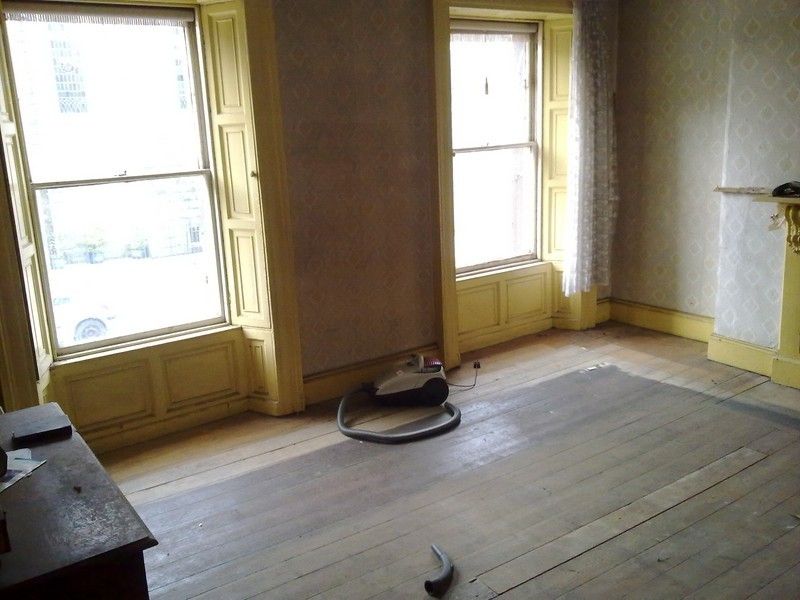
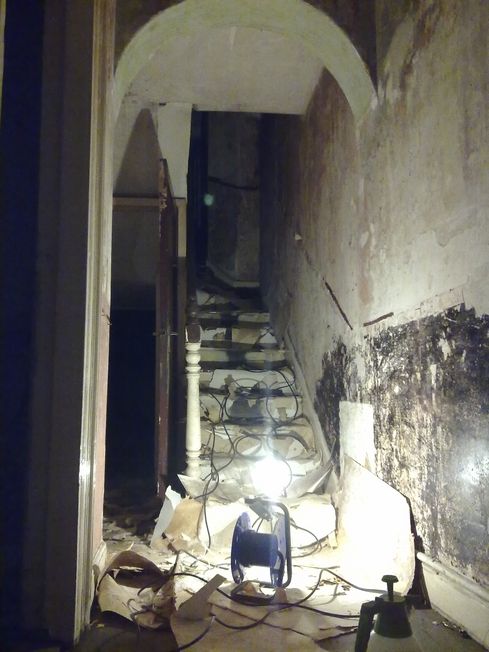
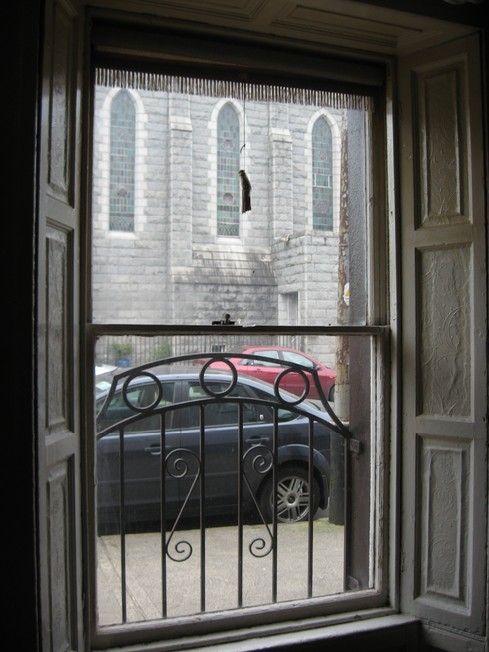
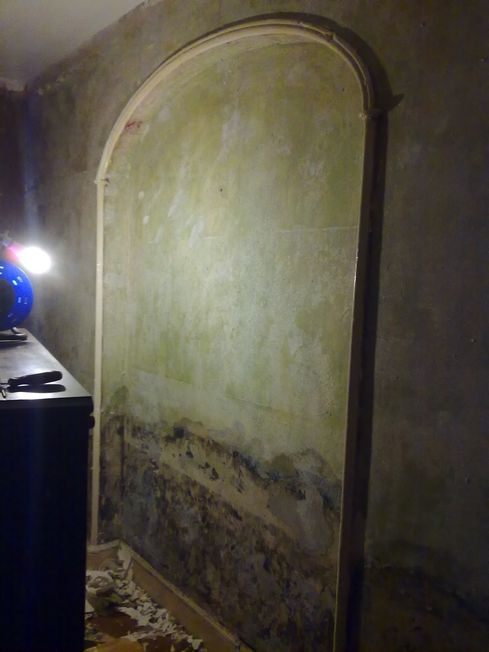
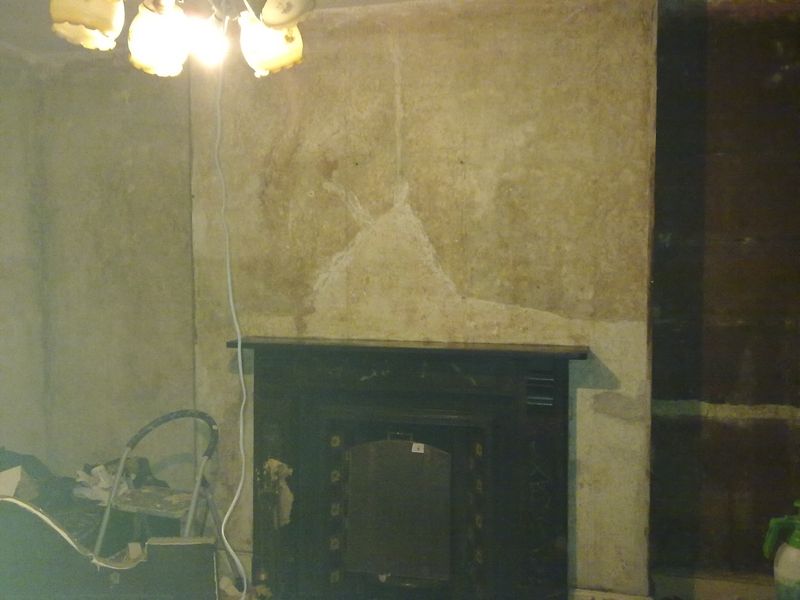

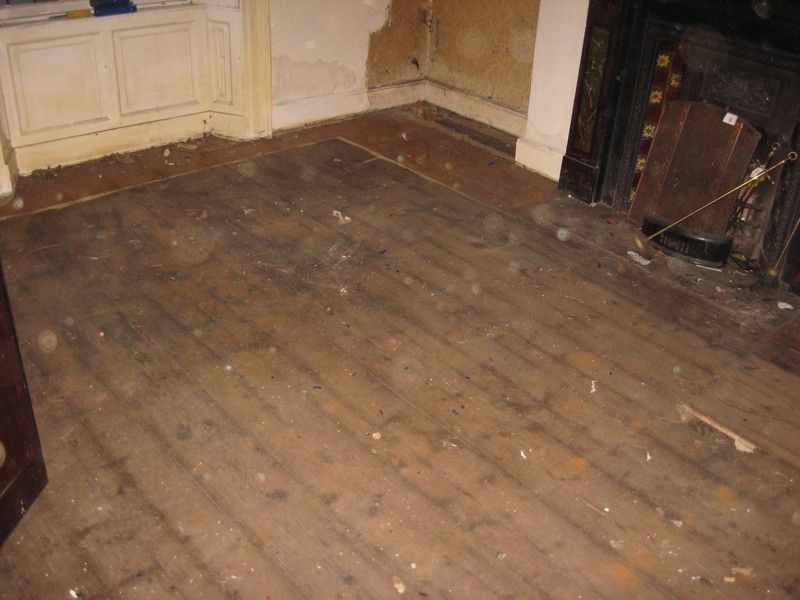
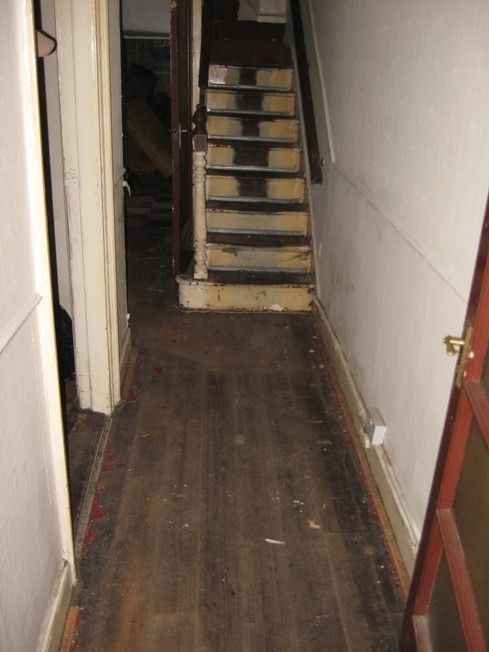
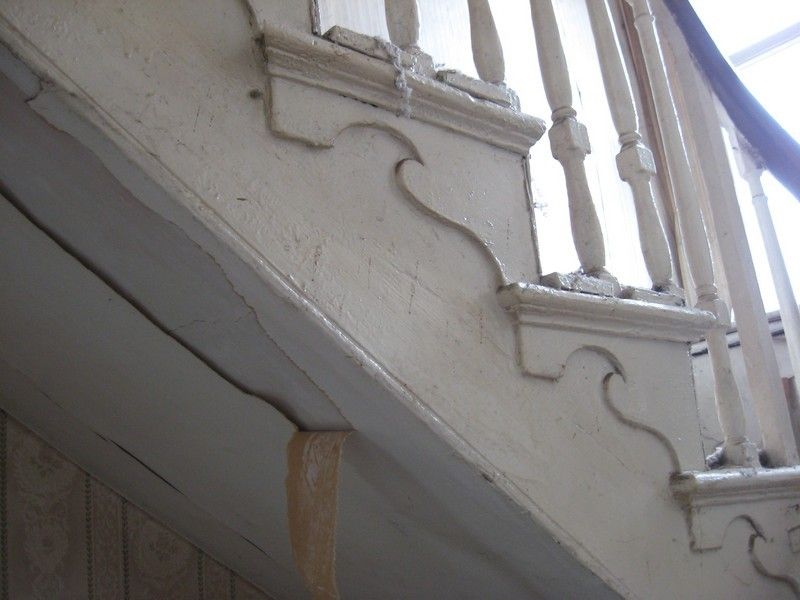


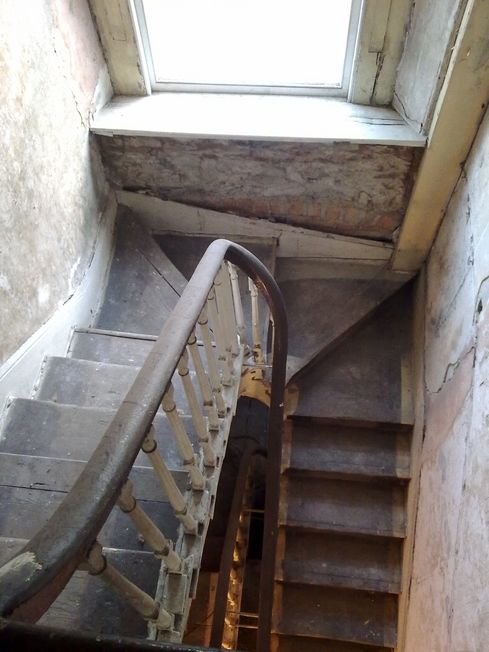
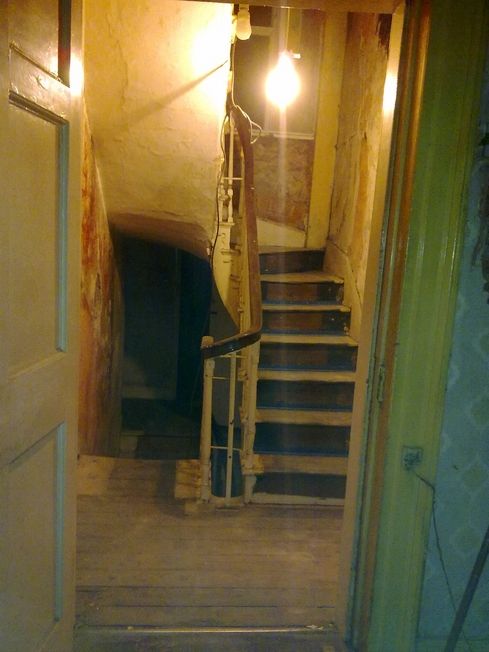


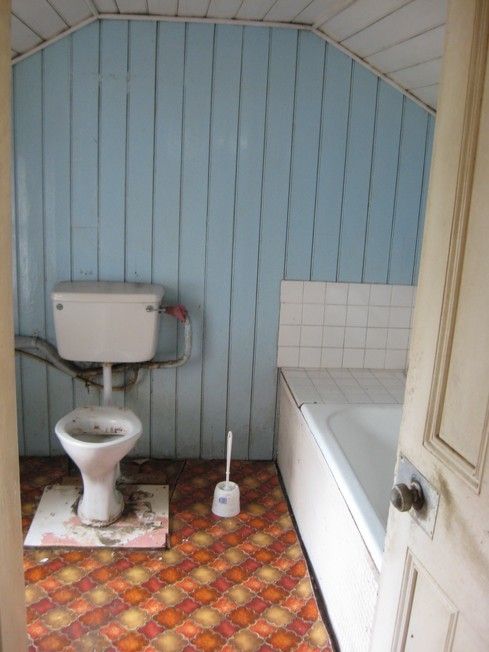
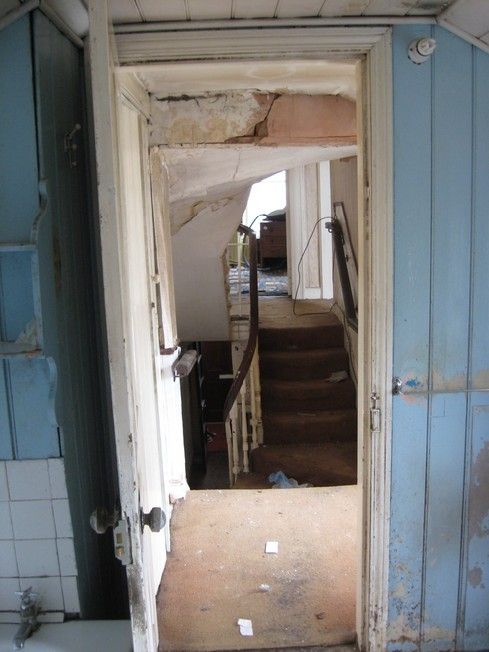
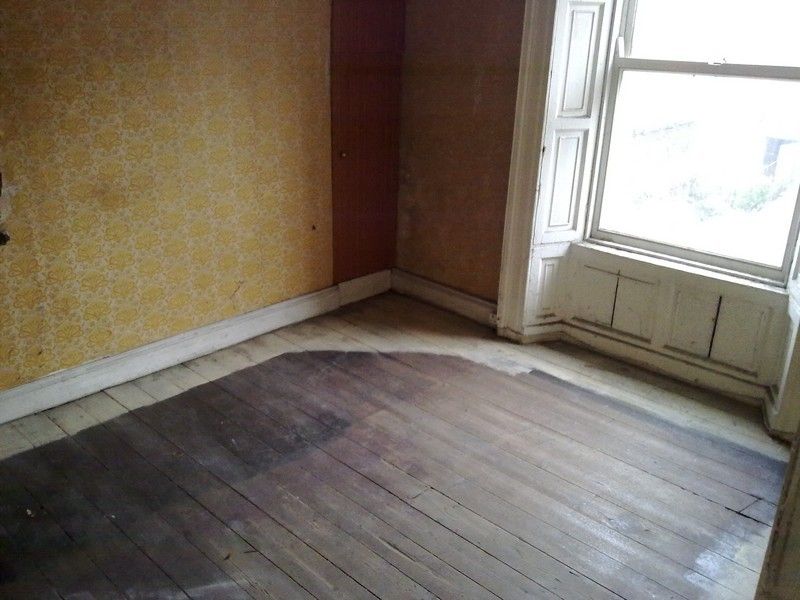
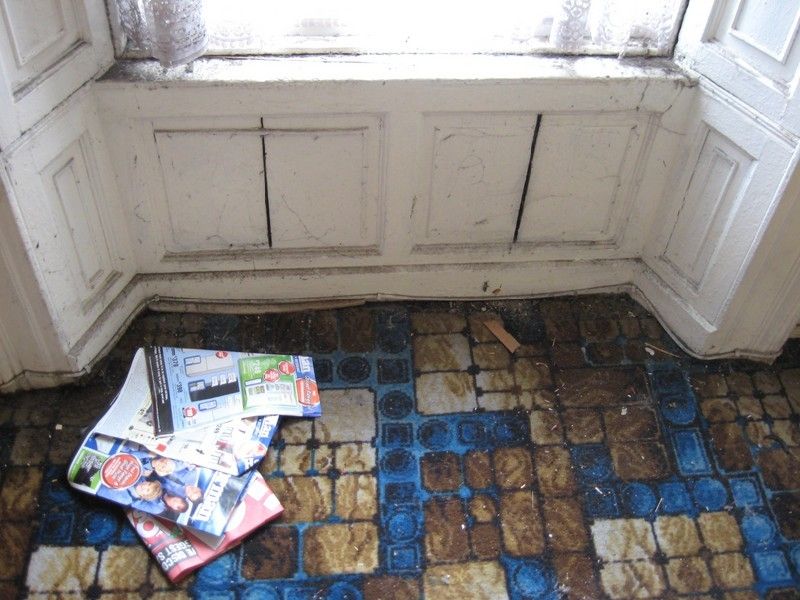
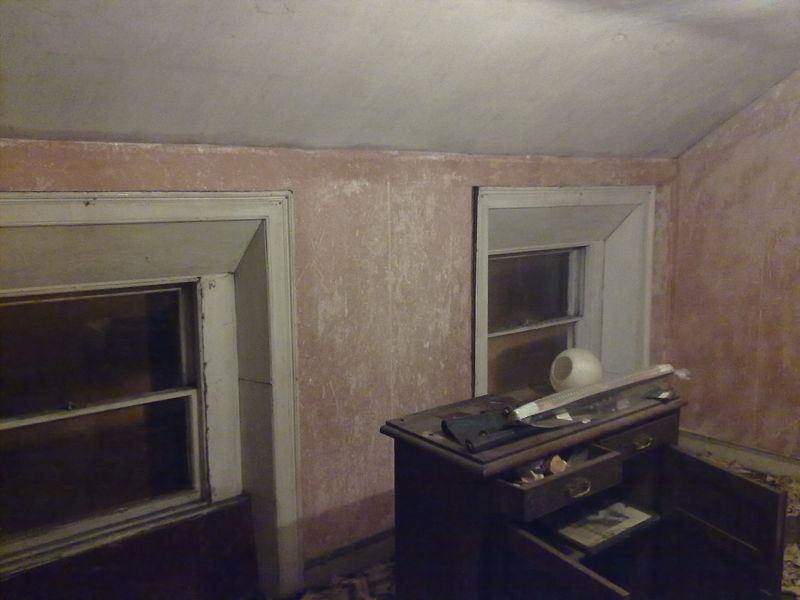
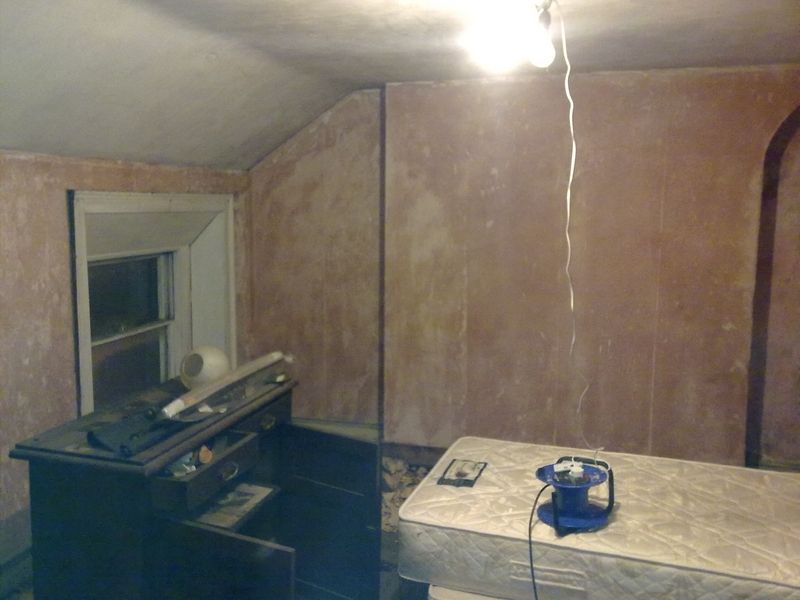
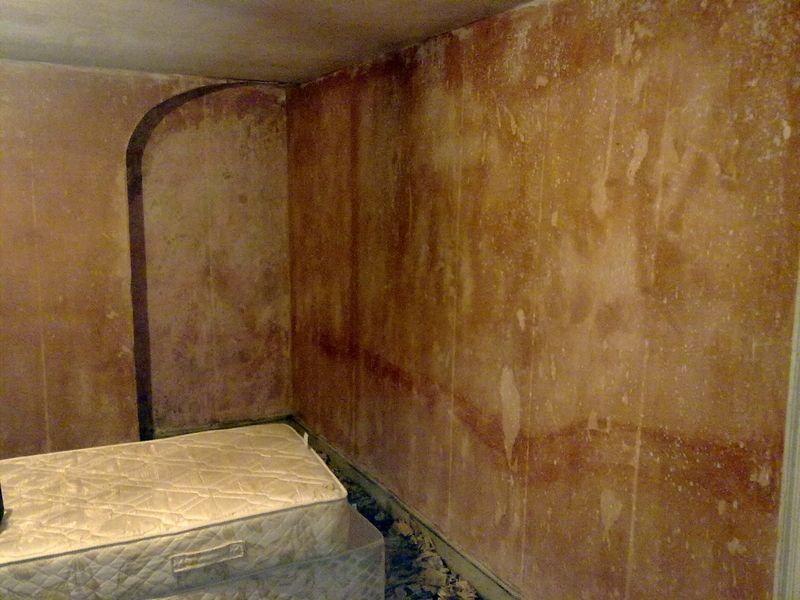

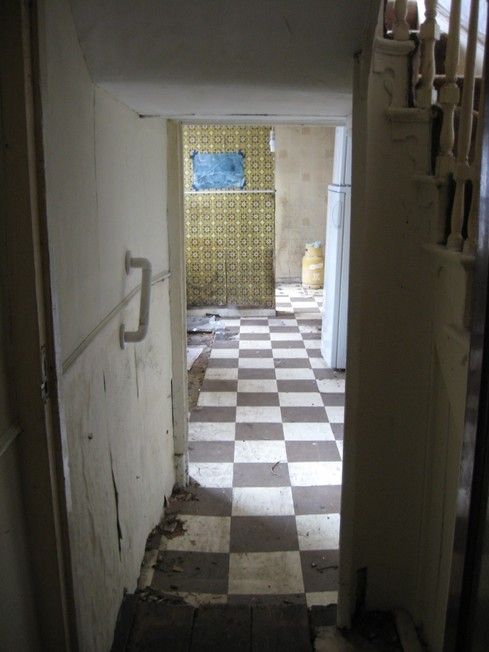
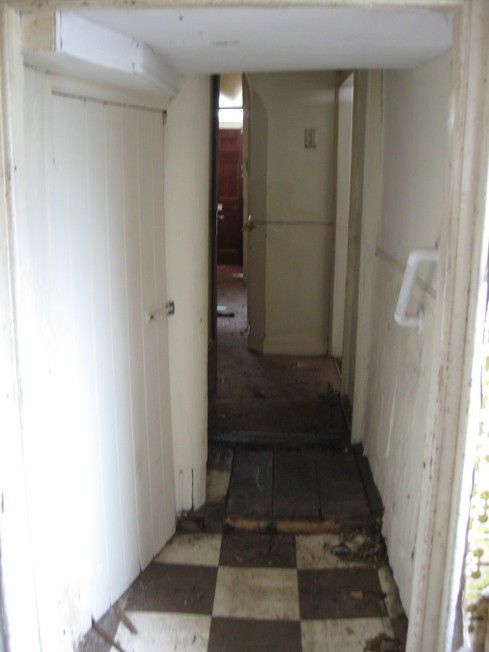
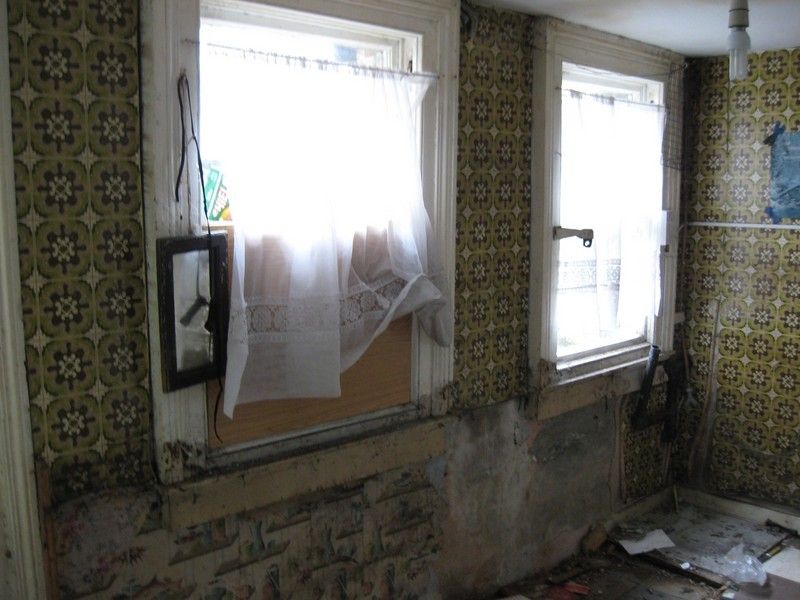
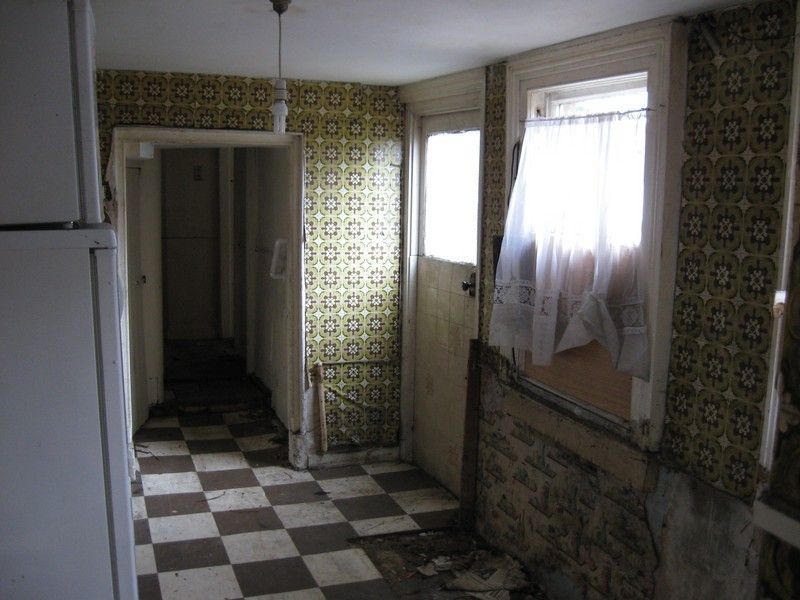
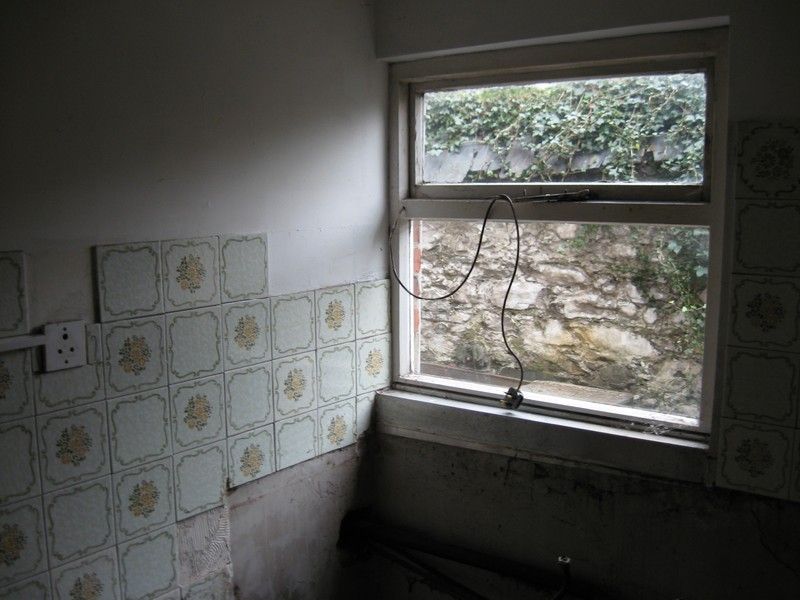
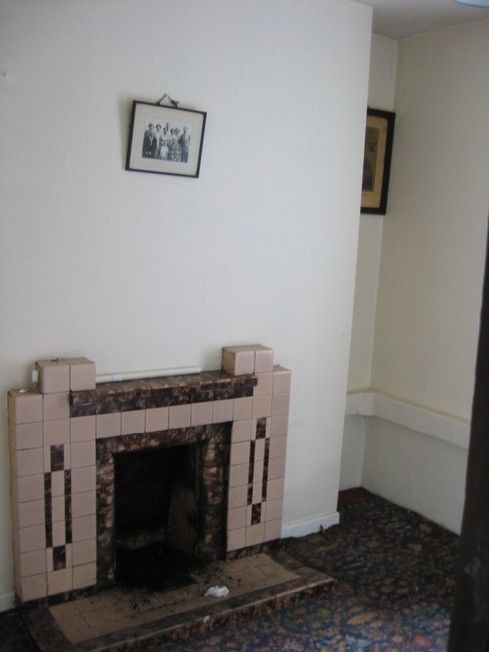
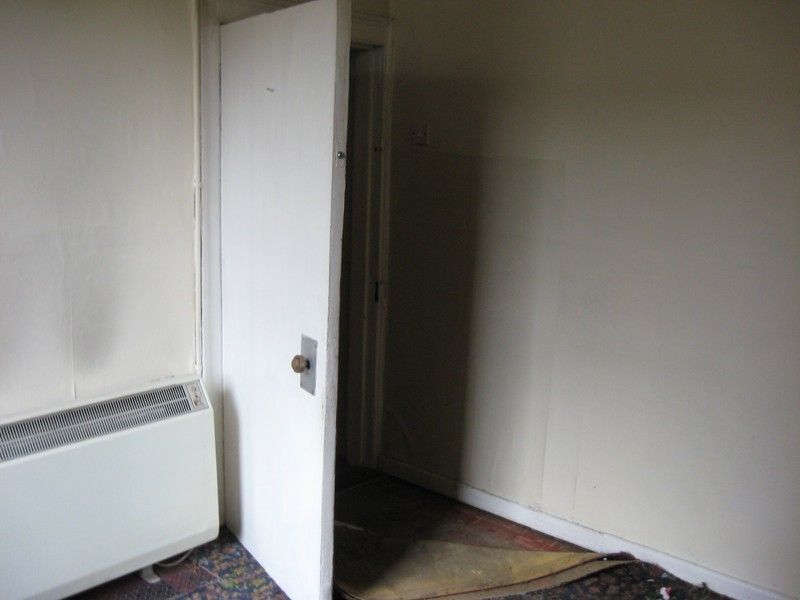
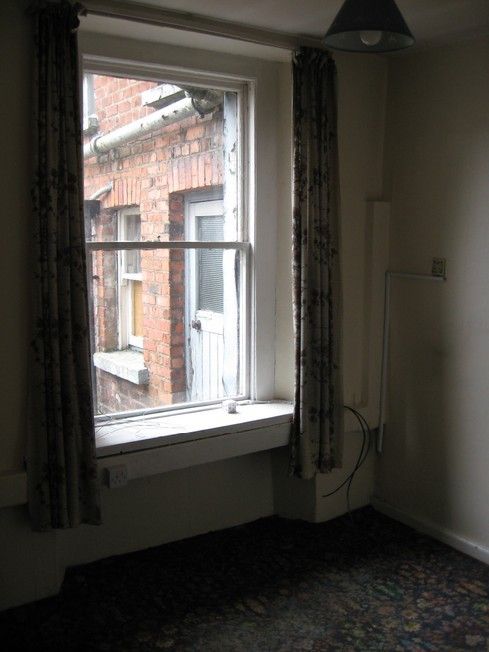
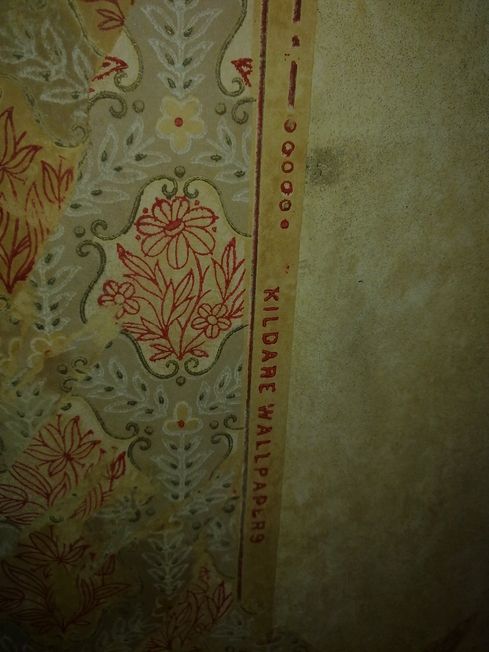
What a great start to the year!
ReplyDeleteHow are you getting on
ReplyDeleteGreat thanks, the work and updates continue!
DeleteAmazing house what a find!! Love the wallpaper hand printed but so so much work ahead
ReplyDeleteInterior Designer and conservation enthusiast!!
Carol
Glad you like it Carol, thanks for the comment! Stephen
DeleteHello, what an amazing house, well done with all the work. We are thinking of buying a period property but we wouldn't know where to even start and how much would be the total cost of getting all the work done. It is a big house and we wouldn't be afraid of hard work :-) thanks for all the tips
ReplyDeleteThis comment has been removed by the author.
ReplyDeleteGreat Blog! If you are looking for Kitchen Renovations in Ireland? Drumm Carpentry is here to serve you with the best services and ideas when it comes to kitchen renovations.
ReplyDeleteNice to be visiting your blog again, it has been months for me. Well this article that i’ve been waited for so long. I need this article to complete my assignment in the college, and it has same topic with your article. Thanks, great share.
ReplyDeleteproperty refurbishment in Clapham
Wow. This one looks like a major renovation :D We are planning to do kitchen and bathroom this year, currently looking for a project and contractor. What do you think about https://thehomeexpert.uk/contact/? It's a firm from our neighbourhood so it seems like a natural choice.
ReplyDeleteHere I am at the beginning. I worked backwards from the most recent post you did through 2016 and decided to move to the beginning and work forward from here to the beginning of 2016. That's some project you took on. I have to say though, the backyard (garden) does not look anything near as bad as it did in the time lapse video I saw at Youtube that led me here to this blog. Where is all the piled up dirt and junk? Where did all of that piled up dirt come from if the garden I saw in that video is the same one I've seen photos of here? Maybe I'll come across some answers as I continue to read.
ReplyDeleteCool
ReplyDelete